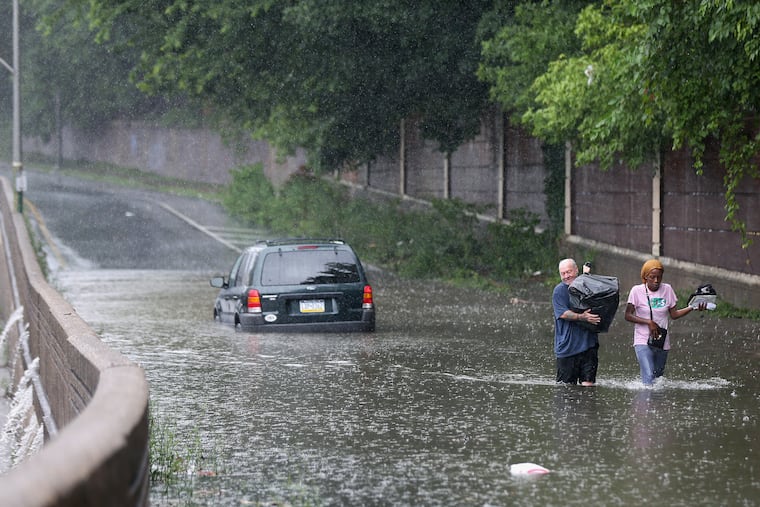Josephine, 10th storm of the hurricane season, forms in the Atlantic and sets another record
Josephine breaks a record set in 2005, one of the deadliest and most-destructive hurricane seasons on record.

With the regularity of downpours in the Philadelphia region, the 2020 hurricane season keeps setting records.
The National Hurricane Center declared that a disturbance almost 1,000 miles from the easternmost Caribbean islands became Tropical Storm Josephine late Thursday morning when its peak winds spun up to 40 mph, 1 mph above the naming threshold.
In the satellite era dating to the 1960s, Josephine is the earliest-occurring 10th named storm of any hurricane season in the Atlantic Basin, which includes the Caribbean and the Gulf of Mexico.
It beats the old record by nine days, and marks the sixth time this season that such a record has been set, a sequence that dates to Edouard in early July.
» READ MORE: Hurricane forecast updates seeing ‘extremely active’ season. It’s barely begun.
On average, the entire June 1 to Nov. 30 season produces 11 named storms.
Josephine is likely to be a “curver,” said Paul Walker, senior meteorologist with AccuWeather Inc., meaning it would make a sharp right turn before it reached the islands; achieve a peak wind speed of 60 mph, 14 beneath hurricane strength; and proceed to obscurity.
» READ MORE: Heavy rains cause flooding at Shore and in Philly as Tropical Storm Fay deluges the region
More significant and perhaps ominous, the old record for a 10th storm was set on Aug. 22, 2005, by Jose. The record for an 11th named storm was set two days later by Katrina, one of the most destructive and deadliest U.S. storms of any kind, occurring in one of the most devastating hurricane seasons.
The traffic so far tracks well with the consensus head-for-the-hills outlooks issued by the major forecasting services. Philip Klotzbach, hurricane researcher at Colorado State University, cited 2005 as one of his 2020 “analog” years.
» READ MORE: Isaias’ aftermath brings a massive cleanup at flooded homes, prolonged outages, and a closed Vine Street Expressway
Klotzbach is calling for 24 named storms, with 12 becoming hurricanes, double the average. Of those, five would become “major,” with winds of 111 mph or better; the average is two.
The National Oceanic and Atmospheric Administration is predicting 19 to 25 named storms, with seven to 11 hurricanes. The updated AccuWeather outlook sees up to 24 named storms.
Klotzbach says conditions are primed for mayhem. They include Atlantic and Gulf waters that are quite warm. In addition, winds that could shear off incipient hurricanes are weak.
One thing is certain: The season is off to a rocketing start, and the climatological peak still is a month away.
On average only three named storms have formed by Aug. 2, and No. 10 occurs on Oct. 19.